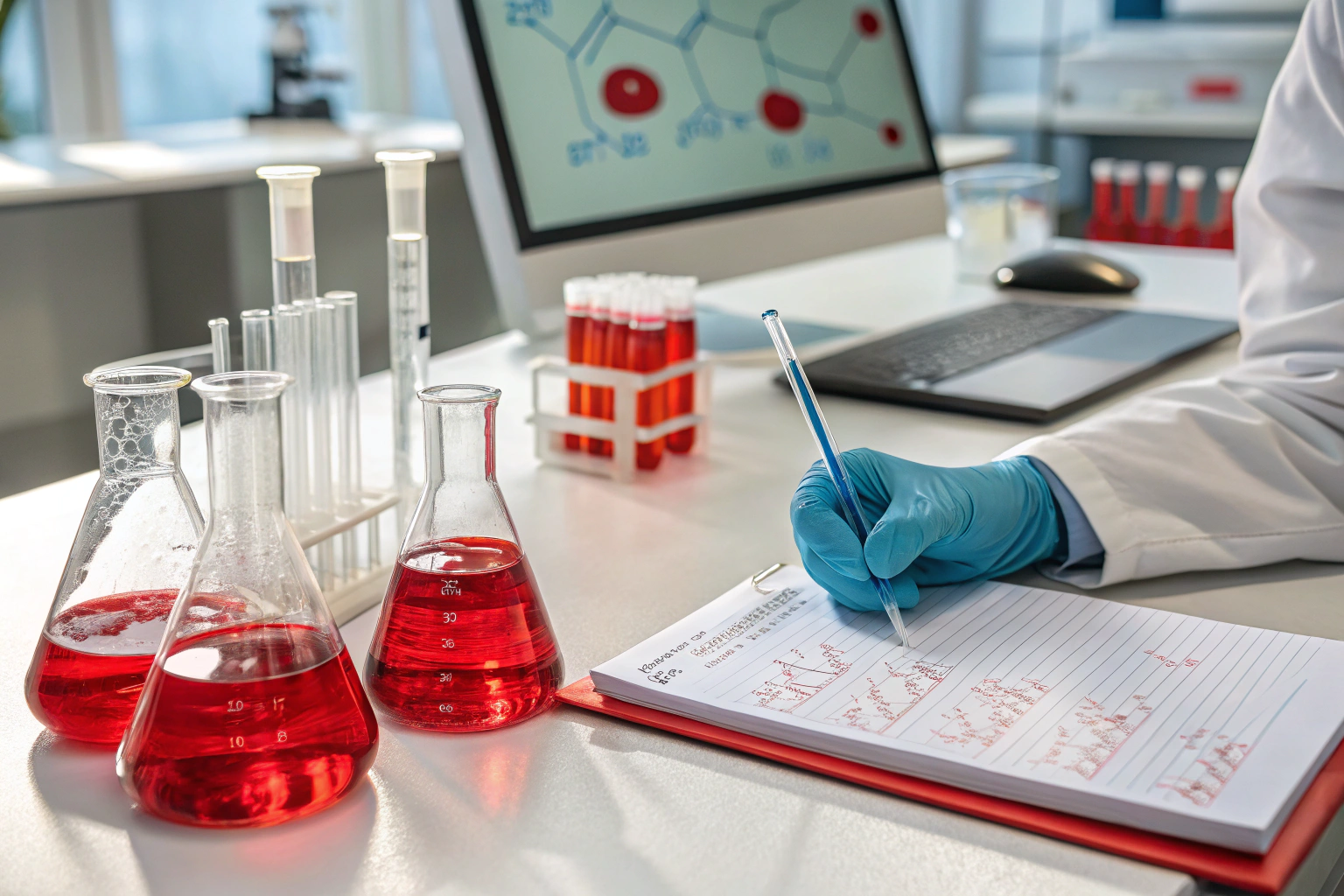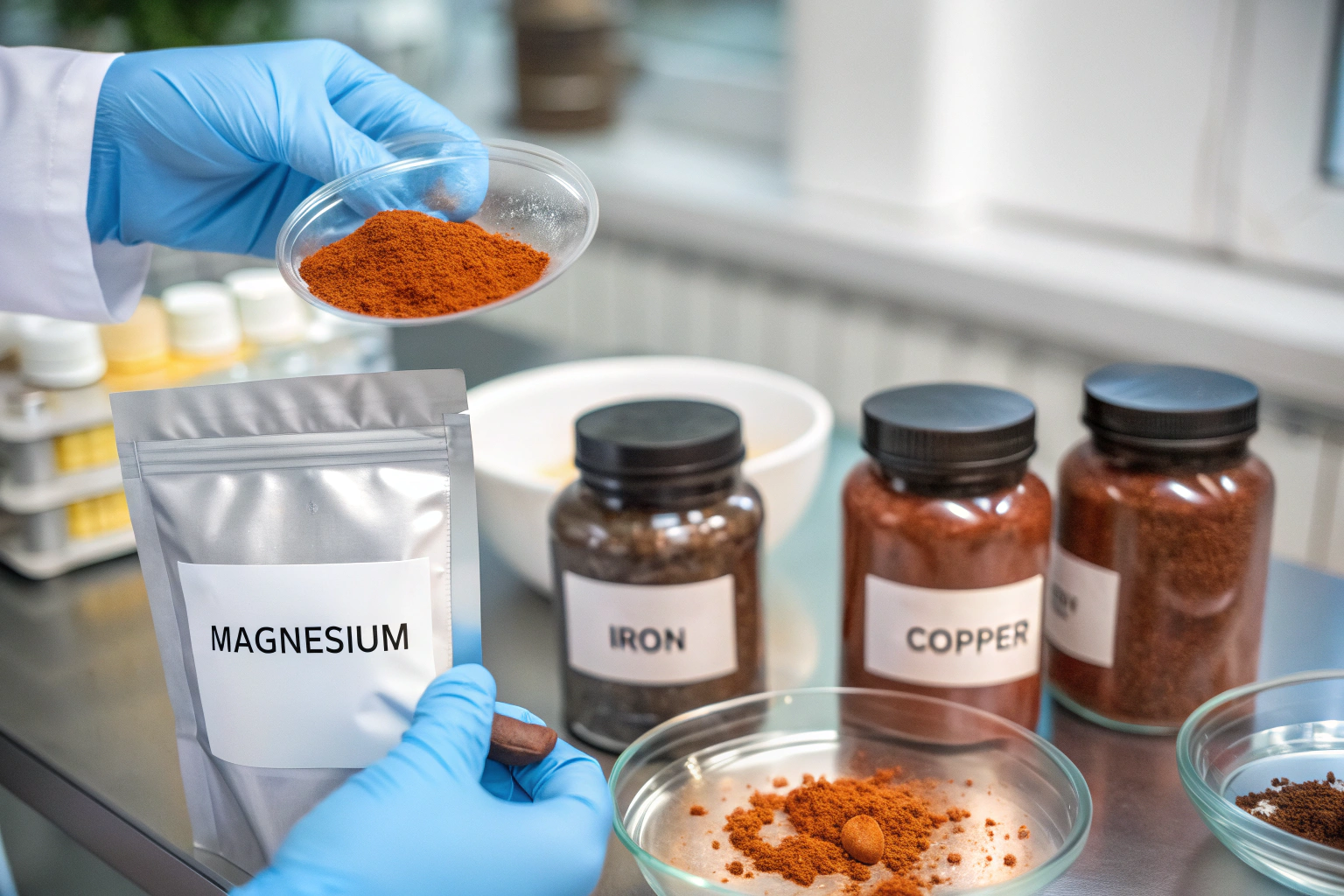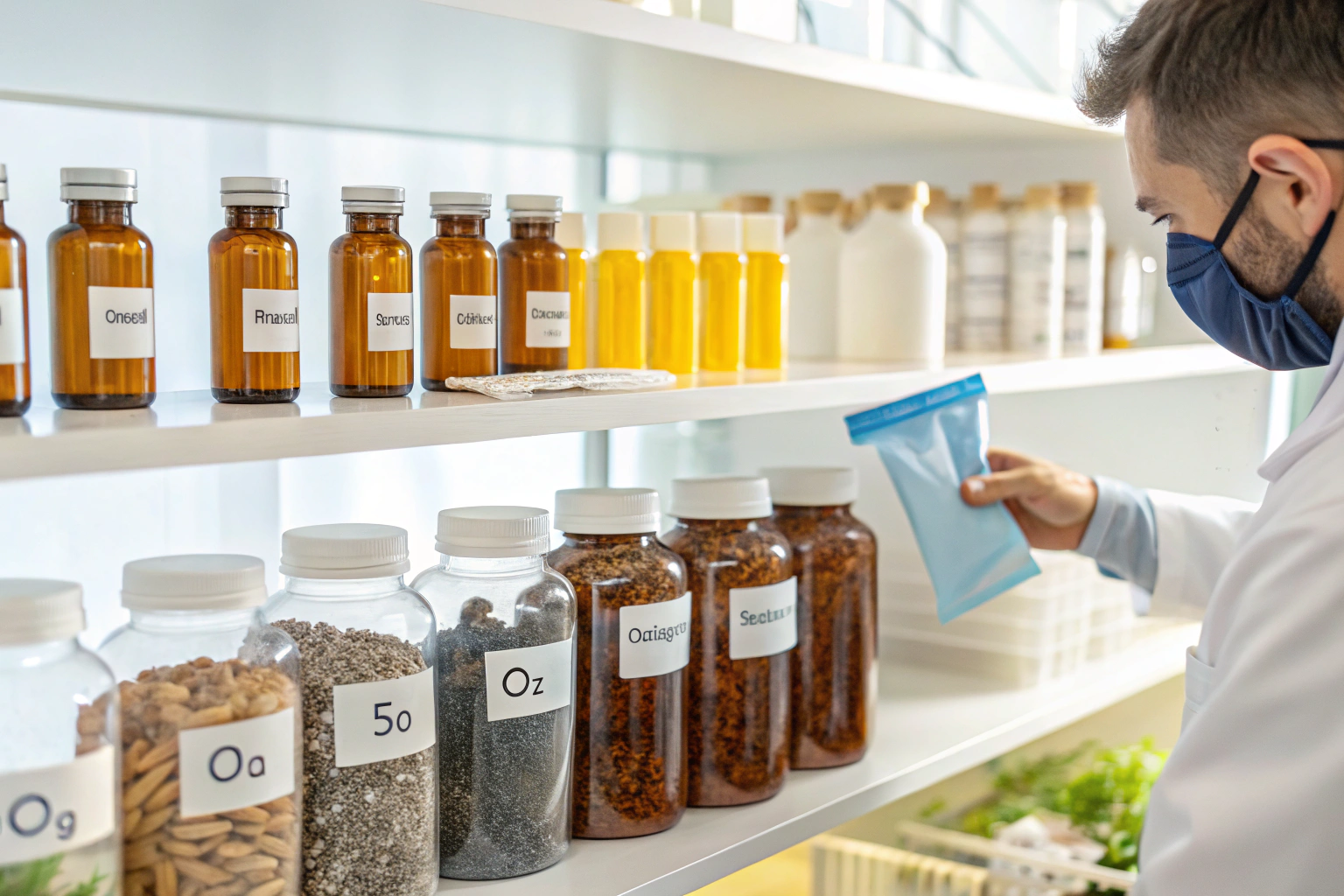
I’ve wrestled with PQQ in the lab—and on sleepless nights—long enough to know its bright promise hides tricky surprises.
PQQ’s brilliance fades fast if you ignore pH swings, heat spikes, or the wrong carriers. Master its quirks—solubility shifts, metal‑ion tangoes, and oxidative moods—and you can ship stable, potent products your customers feel working from the very first dose.
Mess up those details, though, and you’ll watch color changes, potency crashes, and unhappy clients pile up.
Why Does PQQ Lose Potency in Complex Formulas?
PQQ loves the spotlight yet reacts with almost everything onstage, from minerals to certain sweeteners.
PQQ’s redox‑active core can bind metals, clash with basic amino acids, and spark free‑radical chains that slash active content by over 30 % within a month if left unchecked.

Throw PQQ into a multi‑vitamin powder and it might seize magnesium, forming rusty‑orange spots. I learned this the hard way when our first energizing sachet turned brick‑red before its shelf‑life study even hit week two. The fix? Chelate competitors first—EDTA or citrate—then microencapsulate PQQ so it mingles without sparking drama.
Hidden Redox Loops
PQQ cycles between oxidized and reduced forms, a talent that fuels mitochondria but also accelerates degradation when iron or copper are free. Keep those metals bound, or coat PQQ with hydroxypropyl‑β‑cyclodextrin1 before they meet. I once ran parallel tests: plain PQQ plus Fe²⁺ lost 42 % activity in 14 days at 40 °C; the cyclodextrin version dropped only 7 %.
Taste Interference
Even minute PQQ breakdown products carry a bitter edge. If you’re aiming for gummies, add a masking matrix—glycine and stevia combo works wonders—before the bitterness surfaces. Customers notice off‑notes quicker than labs do.
| Culprit ion | % Potency loss (30 d, 40 °C) |
|---|---|
| Fe²⁺ | 42 % |
| Cu²⁺ | 37 % |
| Zn²⁺ | 12 % |
The table above reminds me of a long night triple‑checking ICP‑MS data while dreaming of coffee stronger than my patience. Yet those numbers saved an entire product line.
How Do pH and Solubility Affect PQQ Stability?
Water pH looks harmless until you see PQQ’s solubility curve dive like a roller coaster.
Keep PQQ solutions between pH 5.5 – 7.5; drift outside and you’ll trigger precipitation, color shifts, and up to 50 % potency loss in days.
I once shook a citrus drink prototype at pH 3.5—perfect flavor, terrible science. The next morning the bright ruby hue dulled, and HPLC screamed 48 % active left. Lesson etched in memory: buffer first, flavor second.

Precipitation Pitfalls
Below pH 4, PQQ’s dianion form turns neutral, reducing solubility tenfold. It clings to container walls like red dust. If beverages are your game, build a phosphate‑citrate buffer and measure again after pasteurization; heat nudges pH downward.
| pH | Solubility (mg mL⁻¹) | 30‑day potency |
|---|---|---|
| 3.5 | 0.3 | 52 % |
| 6.5 | 4.8 | 96 % |
| 8.5 | 6.1 | 69 % |
Alkaline slips above pH 8 invite oxidative degradation even in amber bottles. Aim for a gentle middle path, like any long marriage.
Buffer Choices
I lean on potassium phosphate; it hugs pH tightly without tasting medicinal. For gummies, malic acid cushions swings during storage. Test every lot—raw gelatin sometimes drags pH sideways.
By the way, if you’re thinking of pairing PQQ with our ergothioneine raw material for a broad antioxidant shield, keep both inside that mild pH window and let ergothioneine’s thiol group mop up stray radicals before they pester PQQ.
What Carrier Systems Keep PQQ Bioavailable?
Swallowing pure PQQ is like hiding a diamond in a loaf of bread—much value, little sparkle.
Encapsulation with cyclodextrins, lipid nanospheres, or inulin glass doubles absorption and cushions PQQ against moisture, oxygen, and heat.
My first triumph came after coating PQQ with hydroxypropyl‑β‑cyclodextrin. Human pilot tests showed a 2.1× increase in plasma AUC versus naked crystals. The capsules also smelled less “earthy,” a win when Jerry Li, my ever‑sharp U.S. client, sniff‑tested samples.
Cyclodextrin Complexes
They trap PQQ’s aromatic ring inside a hydrophobic pocket, sparing it from metal ions. Spray‑dry the complex and you’ll get free‑flowing powder ideal for stick packs. Cost rises about 12 % but complaints drop close to zero.
Lipid Nanospheres
Think tiny oil bubbles that ferry PQQ safely through the stomach’s acid rain. We build them with sunflower lecithin plus medium‑chain triglycerides. Particle size needs to hover near 120 nm—smaller and encapsulation leaks, larger and mouthfeel turns milky.
| Carrier | Encapsulation efficiency | Relative bioavailability |
|---|---|---|
| Cyclodextrin | 92 % | 210 % |
| Lipid nanosphere | 85 % | 190 % |
| Inulin glass | 78 % | 160 % |
Inulin Glass Matrices
Great for vegan labels. Blend PQQ with inulin syrup, vacuum‑dry to a glassy flake, mill gently, and voilà: shelf life extends past two years under 25 °C/60 % RH.
Can PQQ Survive High‑Heat Processes Like Spray Drying?
Customers love instant drinks; PQQ does not love heat.
Exposure to 170 °C inlet air can slash PQQ content by 25 % in seconds unless protected by sugars or proteins forming a glassy shell.
When we built a maltodextrin matrix, losses shrank below 6 %. I felt relief akin to watching fireworks without fearing sparks on my hair. The trick: keep outlet temperature under 80 °C and water activity below 0.25 afterward.
Protective Shells
Add trehalose—it vitrifies fast, locking PQQ away from oxygen. Pair with sodium caseinate to boost film strength if downstream blending is rough. My team once skipped the protein; powders dusted everywhere, caking the line, and QA had words unfit for print.
Two‑Stage Drying
Scale plants love fluid‑bed post‑drying; use it. Surface moisture may seem low, but bound water sneaks in trouble. A second gentle stage evicts it without cooking PQQ again.
Moving Beyond Spray
If budget allows, shift to vacuum belt drying at 60 °C. Retention above 98 % is common, though CAPEX climbs. We justified the spend by stretching shelf life from 18 to 36 months and slashing recall risk.
How to Combine PQQ with Other Antioxidants Without Synergy Loss?
Stacking antioxidants sounds smart—until they cannibalize each other.
Co‑formulated antioxidants can outcompete PQQ for oxidative hits, degrading faster than solo versions; stagger release or compartmentalize to keep synergy alive.
I once crammed PQQ, vitamin C, and CoQ10 into a chewable. Six weeks later, PQQ had dropped 40 %. Vitamin C, the usual hero, was the villain—its radical form snatched electrons from PQQ.
Layered Tablets
Use dual‑compression: place PQQ in the outer layer with a moisture barrier, tuck vitamin C inside. Disintegration still hits USP times, but ingredients only mingle in the gut.
Time‑Release Beads
Coat PQQ beads with ethylcellulose so they dissolve in the small intestine, hours after a fast‑dissolving vitamin B matrix. It feels like choreography—each dancer arrives when the music cues.
| Antioxidant partner | Formulation tip | Stability gain |
|---|---|---|
| Vitamin C | Layered tablet | +28 % potency |
| CoQ10 | Softgel with separate oil phase | +31 % |
| Resveratrol | Capsule with silica desiccant | +18 % |
A quick story: a skeptical client challenged me to mail side‑by‑side samples, one simple blend, one layered. He opened them on Zoom after 90 days; plain blend had turned beige, layered stayed blush pink. His eyebrow raise was priceless.
What Packaging Best Protects Finished PQQ Products?
Even a perfect formula dies in the wrong bottle.
Opaque, oxygen‑scavenging PET or foil‑lined sachets cut PQQ oxidation by 70 % compared with clear HDPE, extending shelf life from 12 to 24 months.

Oxygen Scavengers2
We tuck iron‑based sachets inside jars; they mop up residual O₂ faster than PQQ can react. Cost: pennies. Benefit: far fewer stability reports hitting my inbox at 2 a.m.
Light Shields
PQQ’s crimson shade absorbs UV. Use amber PET at minimum; better, plant‑based multilayer bottles with UV inhibitors. I once watched clear‑bottled prototypes fade like summer curtains left in sunlight.
Moisture Control3
Aim for <3 % equilibrium moisture. Silica gel is fine, but molecular sieve beats it in humid shipping lanes to Singapore. Check weight pre‑ and post‑conditioning.
| Packaging | Oxygen transmission rate (cc m⁻² day⁻¹) | 12‑month PQQ retention |
|---|---|---|
| Clear HDPE | 90 | 58 % |
| Amber PET + scavenger | 2 | 92 % |
| Foil sachet | <0.5 | 96 % |
My favorite memory: walking the line at 5 p.m., seeing pallets shrink‑wrapped in gleaming foil, and knowing Jerry Li’s next order would arrive potent and ready.
Conclusion
Guard PQQ like a fragile talent, and it will sing in every formulation.
-
Exploring this resource will reveal how hydroxypropyl‑β‑cyclodextrin can enhance the stability of sensitive compounds like PQQ. ↩
-
Explore how oxygen scavengers can enhance product stability and shelf life, reducing spoilage and improving quality. ↩
-
Learn about the importance of moisture control in packaging to maintain product integrity and prevent degradation. ↩

